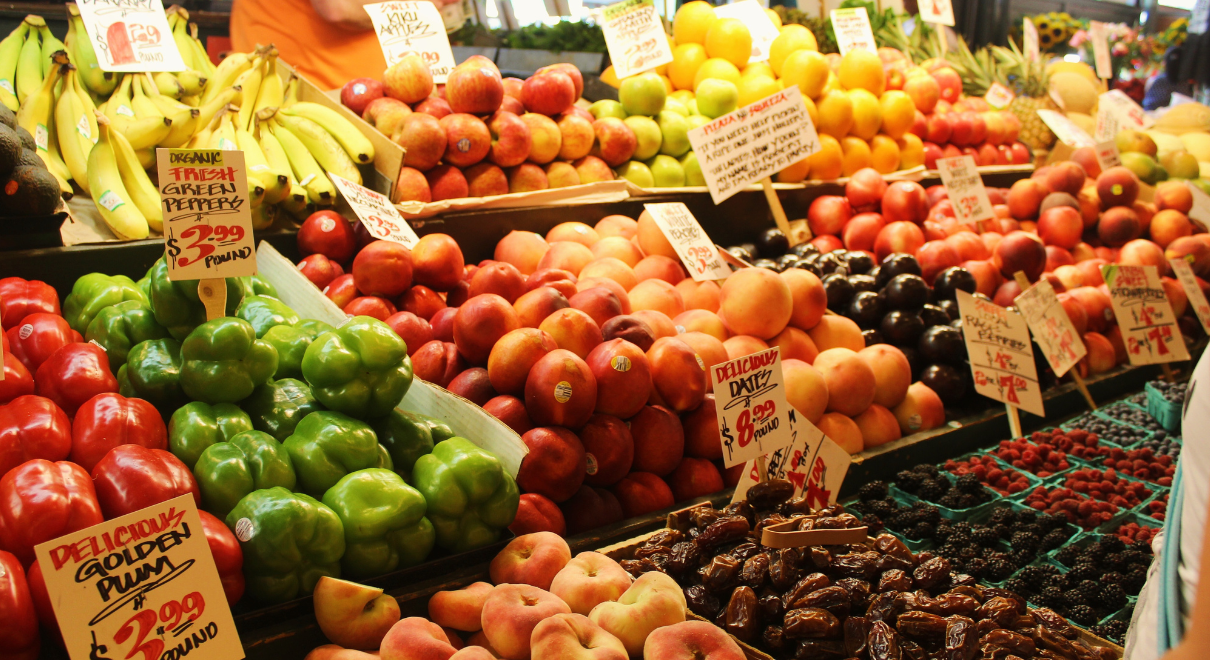The Food Conversation We Need To Have: Antimicrobial Preservatives.
At first glance, antimicrobial sounds incredible. Protecting us from bacteria, fungus, and yeast can make us safer.
Used in Medicine or industry, these are very important. What about inside our body? How does it affect gut health?
What are preservatives?
Preservatives are substances added to food, cosmetics, pharmaceuticals, and other products to prolong their shelf life and maintain quality by preventing spoilage. They play a crucial role in keeping products safe and usable for longer periods, reducing waste and making products more accessible and convenient. The primary function of preservatives is to protect products from deterioration caused by microorganisms such as bacteria, molds, and yeasts, as well as from chemical changes like oxidation. This protection is especially important in today’s global economy, where products often travel long distances and need to remain stable and safe for consumption or use over extended periods.
There are several types of preservatives, each serving a specific purpose based on the nature of the product and the kind of spoilage it is prone to.
Antimicrobials
Antimicrobials are used to inhibit the growth of bacteria, molds, and yeast, thus preventing spoilage and extending shelf life.
Antioxidants
Antioxidants serve to prevent or delay oxidative spoilage, which is particularly important in products with high-fat content, like oils and snacks, to prevent them from becoming rancid.
Chelating agents
Chelating agents are another type of preservative that bind to and inactivate trace metals which can catalyze spoilage reactions.
Enzymatic inhibitors
Enzymatic inhibitors are used to block the activity of natural enzymes in foods that can lead to degradation and spoilage, such as browning in fruits and vegetables.
Let’s dig into Antimicrobial Preservatives
Antimicrobial preservatives are among the most commonly used types, given their effectiveness in combating a broad spectrum of microorganisms that can cause food spoilage and safety concerns. These preservatives work by various mechanisms, such as disrupting the cell membranes of microbes, interfering with their metabolism, or inhibiting their growth and reproduction.
Common antimicrobial preservatives include substances like sodium benzoate and potassium sorbate, used in acidic foods and beverages, and nitrates and nitrites, which are crucial in preserving the safety and color of cured meats. While effective, the use of antimicrobial preservatives is carefully regulated to ensure safety and minimize potential health impacts.
The concentration of these preservatives is kept within safe limits, as established by food safety authorities, to ensure they are effective without posing risks to consumers. Their role in maintaining food safety and reducing food waste is significant, making them a key component in modern food preservation strategies.
Why does the world need preservatives?
The introduction and widespread use of preservatives in our global food supply chain is a response to the evolving needs of a growing and increasingly interconnected world. As populations have expanded and urbanized, the demand for a stable, safe, and diverse food supply has risen dramatically.
In this context, preservatives play a critical role. They extend the shelf life of food products, ensuring that they remain safe and of high quality from the point of production to consumption. This extension is vital in our modern supply chain, where food often travels long distances from producers to consumers.
Without preservatives, the risk of spoilage and waste would increase significantly, especially for perishable items like dairy, meat, and many processed foods. Furthermore, the use of preservatives is essential in maintaining the safety of the food supply, reducing the incidence of foodborne illnesses caused by microbial contamination.
Consumer buying habits
Consumer buying habits have also influenced the need for preservatives. With the shift towards less frequent, bulk shopping trips and the desire for convenience, consumers often seek products that have longer shelf lives and require less frequent replacement. This trend has been further accelerated by the growth of online shopping and home delivery services, where the time between packaging and consumption can be unpredictable.
Preservatives ensure that products remain safe and fresh during these extended periods. Additionally, the expectation for year-round availability of a wide variety of foods, regardless of their natural growing seasons, has been made possible through the use of preservatives. They enable a diverse range of foods to be accessible to consumers globally, regardless of geographical and seasonal constraints. In summary, preservatives are integral to the modern food supply chain, catering to consumer demands for convenience, variety, and safety, while also tackling the challenges of food distribution in a globalized world.
How do antimicrobials work?
Antimicrobial preservatives are a key component in food preservation, functioning to extend shelf life and ensure safety by inhibiting the growth of harmful microorganisms like bacteria, fungi, and yeast. These preservatives work through various mechanisms, targeting the essential components or processes of microbial cells.
For instance, some antimicrobials disrupt the cell membrane’s integrity, leading to the leakage of vital cell contents and ultimately causing cell death. Others interfere with the microbe’s metabolic processes, such as protein synthesis or energy production, effectively stopping their growth and reproduction.
Certain antimicrobials, like nitrates and nitrites used in meat products, also inhibit the growth of specific bacteria like Clostridium botulinum, which can cause foodborne illnesses. The effectiveness of these preservatives is influenced by factors such as the food’s pH, temperature, and moisture content.
By carefully regulating and balancing the use of antimicrobials, food manufacturers can significantly reduce the risk of spoilage and contamination, thereby ensuring the products remain safe and high-quality for consumption over an extended period.
Is it possible that antimicrobials do the same thing to the human body?
The potential of antimicrobial preservatives to affect the gut microbiome, particularly by causing cell damage similar to their intended targets in food preservation, is a topic of increasing interest and research. These antimicrobials, designed to inhibit or destroy harmful microorganisms in food, may not always distinguish between pathogenic and beneficial microbes within the human gut.
Since their mode of action often involves disrupting cellular membranes or interfering with essential metabolic processes, there’s a theoretical risk that they could similarly impact the delicate balance of the gut microbiome. This disruption could manifest as damage to the cell membranes of beneficial gut bacteria, fungi, or yeast, potentially leading to altered gut flora dynamics.
The extent of this impact is likely influenced by factors such as the types and concentrations of antimicrobials consumed, individual dietary patterns, and the inherent resilience of the gut microbiome.
How does your body respond to dying cells?
When faced with such cellular damage within the gut microbiome, the human body has several response mechanisms. Primarily, the immune system may recognize and react to the fragments of damaged microbial cells, potentially leading to an inflammatory response. This immune reaction, while part of the body’s natural defense system, could, in some cases, contribute to gut discomfort or other gastrointestinal issues if it becomes excessive or chronic.
Additionally, the body’s natural processes for clearing cellular debris, such as phagocytosis by immune cells, would be activated to remove the remnants of damaged microbial cells. Over time, the gut microbiome may adapt to these changes, with certain microbial populations potentially becoming more dominant, while others diminish.
This shift in microbial balance could have implications for various aspects of health, including nutrient absorption, metabolism, and even the modulation of the immune system.
Is this a possible root cause of food allergies?
The potential link between the interaction of antimicrobial preservatives in the gut and the development or exacerbation of allergies is an intriguing area of research. The hypothesis is rooted in the understanding that antimicrobials, while effective at inhibiting harmful microbes in food, may inadvertently alter the composition and function of the gut microbiome.
This alteration could disrupt the delicate balance of immune system regulation that the gut microbiome plays a crucial role in maintaining. A healthy and diverse gut microbiota is essential for developing and sustaining a robust immune response. Changes in this microbiome, possibly induced by antimicrobials, might lead to an imbalanced immune system, skewing it towards hypersensitivity reactions.
This dysregulation can manifest as increased susceptibility to allergies, as the immune system begins to overreact to harmless substances. While the precise mechanisms are still being unraveled, it’s theorized that a disrupted gut microbiome could affect the maturation of immune cells and the production of regulatory molecules, thereby contributing to an allergic predisposition.
This area of study aligns with the broader ‘hygiene hypothesis,’ which suggests that reduced exposure to diverse microbial environments in early life may be linked to the rising prevalence of allergies and autoimmune conditions in developed countries.
Do preservatives work? Is the value worth it?
Preservatives are found in and on almost everything we eat. The truth is they work, increasing shelf life by 50-100% in everyday products, and the fact behind that should terrify you. As we learned earlier, antimicrobials break apart cell membranes of bacteria, fungi, and yeast – all three of which exist in your gut.
The real question is, does the increased shelf life really matter? If you look at it, the answer might make you think twice.
Bread
- Without Antimicrobials: Homemade or artisan bread without preservatives typically lasts about 2-3 days at room temperature before it starts to mold or become stale.
- With Antimicrobials: Commercially produced bread that contains antimicrobial preservatives like calcium propionate can last up to 7-14 days or more, depending on storage conditions.
Dairy Products
- Without Antimicrobials: Fresh dairy products like milk and yogurt without preservatives usually have a shelf life of about 7-10 days in the refrigerator.
- With Antimicrobials: Dairy products with added preservatives can last longer. For example, some preservative-containing milk products can last up to 2-3 weeks in the fridge.
Canned Goods
- Without Antimicrobials: Many canned goods don’t require preservatives due to the canning process itself, which involves high heat to kill microbes. These can last for years.
- With Antimicrobials: The addition of preservatives in some canned products can further extend shelf life, especially for products that are at risk of certain types of spoilage once opened.
Sauces and Condiments
- Without Antimicrobials: Natural or homemade sauces and condiments may last a few days to a couple of weeks in the refrigerator.
- With Antimicrobials: Commercial sauces and condiments with preservatives can last several months to a year or more in the refrigerator after opening.
Snack Foods
- Without Antimicrobials: Snack foods like chips and crackers without preservatives typically have a shorter shelf life, lasting a few weeks to a couple of months.
- With Antimicrobials: When preservatives are added, these products can last several months longer due to reduced risk of microbial growth and rancidity.
Impact of Other Factors
- Packaging: Vacuum sealing, modified atmosphere packaging, and airtight containers can also extend shelf life.
- Storage Conditions: Temperature, humidity, and exposure to light can significantly affect shelf life.
- Product Composition: The inherent properties of the product, like pH, moisture content, and fat content, also play a crucial role in shelf life.
Is there a better path forward? Can we rethink food? Where do we start?
If the reliance on preservatives were to be reduced or eliminated, yet maintaining a global food supply chain remained essential, innovative packaging and storage techniques would play a pivotal role in preserving food quality and safety.
Food packaging
Advanced packaging methods, such as vacuum sealing and modified atmosphere packaging (MAP), could significantly extend the shelf life of perishable goods. Vacuum sealing removes air from the package, thus limiting the growth of aerobic bacteria and mold. MAP, on the other hand, involves altering the composition of the gases inside the packaging to slow down microbial growth and oxidative spoilage.
For example, increasing the proportion of carbon dioxide in packaging can inhibit bacterial growth, while reducing oxygen levels helps to prevent oxidation in foods. Additionally, smart packaging technologies that include indicators for temperature, humidity, and spoilage could provide real-time information about the food’s condition, enabling better management of the supply chain and reducing waste.
Food storage
In terms of storage, investing in improved refrigeration and controlled atmosphere storage can be crucial in prolonging the shelf life of food products, particularly fresh produce, meats, and dairy. Controlled-atmosphere storage, which involves regulating the composition of gases in the storage environment, can slow down the ripening and decay of fruits and vegetables. This method is particularly useful for extending the freshness of products during long-distance transportation.
Advancements in refrigeration technology, such as blast chilling and cryogenic freezing, can preserve the quality of food more effectively than traditional methods. These technologies not only slow down microbial growth but also minimize the degradation of texture, flavor, and nutritional value. Implementing these improved packaging and storage strategies across the global food supply chain would necessitate a significant investment in infrastructure and technology, but it could offer a sustainable path forward in reducing the reliance on chemical preservatives while ensuring food safety and minimizing waste.
Rethinking how we buy food
Rethinking our food purchasing habits is another vital strategy in reducing reliance on preservatives. By shifting towards more frequent purchasing of smaller quantities of fresh, local produce, consumers can significantly diminish the need for long shelf lives facilitated by preservatives.
Embracing a ‘buy as you eat’ approach, where shopping is based on immediate or short-term consumption needs, can ensure that food is consumed at its freshest, negating the need for extensive preservation. Additionally, supporting local farmers’ markets and community-supported agriculture (CSA) programs not only reduces the distance food travels (thereby reducing the need for preservatives) but also fosters a connection with the food’s source and seasonal eating.
Seasonal eating involves consuming foods that are currently in season in your geographical area, which are typically fresher and require less preservation. Such consumer behavior changes, coupled with a heightened awareness of food origin and the environmental impact of food choices, can collectively contribute to a reduced dependency on preservatives while promoting a more sustainable and health-conscious food culture.
What can I do today to change?
Start small. Look at what food you buy every week, it might be bread, veggies, or meat.
Ask yourself, could you stop to buy bread once more a week? What about fresh meat?
Take the time to stop by the market once more a week for just that product. It’s that simple.
Let’s rethink food, together.


